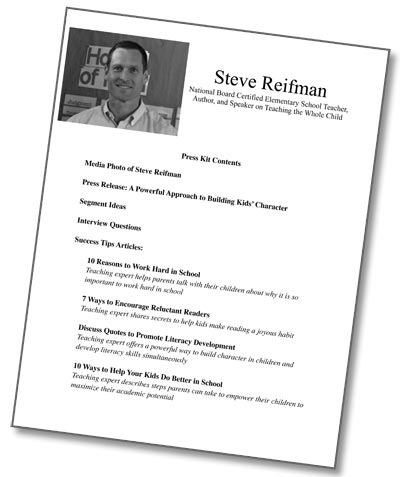
Tip #7: Class Mission Statement (Part 3 of 3)
Using the Class Mission Statement as a Reference Point for Support and Guidance
Tip #6: Class Mission Statement (Part 2 of 3)
The Teaching Tips for this three-week period follow the sequence shown below.
Tip #5: Class Mission Statement (Part 1 of 3)
The most powerful step that we, as teachers, can take to establish a sense of purpose in our rooms is to create a Class Mission Statement with our students. The process of writing the class mission statement generally takes one week and produces a phenomenal reference point that helps children understand the many purposes of their learning, improve their behavior, work with greater motivation and enthusiasm, and find greater meaning in their work. I simply cannot imagine myself teaching without this tool.
Tip #4: Icebreakers & Team-builders
This week I continue to present ideas that connect to the four beginning-of-the-year priorities introduced in Teaching Tip #1. This tip addresses the second priority: begin to build a cooperative classroom culture through icebreaking and team-building activities so students feel safe and comfortable and see one another as friends and assets, not rivals.
Â
Below you will find the names and descriptions of four of my favorite icebreaking and team-building activities.
1) Compliments - In this activity students brainstorm a list of compliments to use throughout the year. During this process we are helping the kids build the type of positive vocabulary we wish to promote in our classrooms. (Time: approximately 15-20 minutes)
Tip #3: Invest in Training
This week I continue to present ideas that connect to the four beginning-of-the-year priorities introduced in Teaching Tip #1. This tip addresses the first priority: establish procedures, routines, and expectations so students know how to function efficiently and effectively in our classrooms. This type of training generally takes 4-6 weeks.
Due to the very real pressure to start teaching content standards right off the bat so that students aren’t disadvantaged come testing time, many teachers choose not to devote sufficient time and attention to these matters. Such a decision is understandable, but it’s also shortsighted. The long-term benefits of training far outweigh the short-term costs. Investing time during the beginning of the year to set our students up for success will save considerable time down the road and result in a more productive classroom environment.
Tip #2: The First Day Letter
Over the next several weeks the Teaching Tips will connect to the four beginning-of-the-year priorities I introduced last week. This tip addresses the fourth priority: communicating with students’ familes in a proactive manner.
The First Day Letter is the educational equivalent of a movie trailer. It offers a sneak preview of the year ahead, whetting parents’ appetite for what’s to come. The First Day Letter is a sincere articulation of who you are, what you value, and what you hope to accomplish. Your words paint a picture for parents of what the upcoming months will look like and create a sense of possibility, optimism, and excitement by charting the direction in which you want to take the class. Writing a First Day Letter provides you with your first and best opportunity to establish your leadership of the class, build goodwill, and capture parents‘ attention.
Tip #1: Beginning-of-the-Year Priorities
At the beginning of each new school year, we need to focus significant time and attention on the four critical priorities described below.
Over the next couple months all the weekly teaching tips will address these priorities. I describe these priorities in much greater detail in my book Eight Essentials for Empowered Teaching and Learning, K-8: Bringing Out the Best in Your Students.
To help you implement the weekly tips, I will frequently upload various items in the "Free Resources" section of this website.
Press Kit
 Online Media Contact: Anne Leedom
Online Media Contact: Anne LeedomNet Connect Publicity
916-939-8246
This email address is being protected from spambots. You need JavaScript enabled to view it.
Click here to download
Steve Reifman's PDF Press Kit
Contact
The Two Voices
 In my ongoing efforts to build a classroom culture of quality and promote valuable habits of character, I am always on the lookout for ways to inspire students, bring out the best in them, and share important life lessons. Sometimes I am able to impart this type of information through a visual or a story or a photograph. For example, last school year I introduced the "Making the Choice" visual to encourage everyone to dedicate themselves to becoming more determined students, and the results were very promising. As teachers, we can never know which of these efforts will resonate with kids, so we try to find as many as possible.
In my ongoing efforts to build a classroom culture of quality and promote valuable habits of character, I am always on the lookout for ways to inspire students, bring out the best in them, and share important life lessons. Sometimes I am able to impart this type of information through a visual or a story or a photograph. For example, last school year I introduced the "Making the Choice" visual to encourage everyone to dedicate themselves to becoming more determined students, and the results were very promising. As teachers, we can never know which of these efforts will resonate with kids, so we try to find as many as possible.
This school year I started using a new strategy with my class, and because it has been working so effectively, I find myself referring to it frequently. I call this strategy “The Two Voices.†This idea pertains to the situation in which students find themselves many times every day as they work on school activities, projects, and homework. As adults, we also find ourselves in this situation frequently as we go about our work.
I tell my students that it is human nature to have two competing desires when we are doing our work. On one hand, we want to do a great job. We want our work to be neat, correct, and creative. In other words, there is a force inside each one of us that wants to produce quality work. With some children it may be difficult to see this force sometimes, but it is there, waiting to be unleashed. On the other hand, we also have the desire to be done. Oftentimes, we simply want to finish.
In my opinion, which force ends up victorious in this ongoing competition goes a long way towards determining whether kids will become quality students. If the “I want to get done†side is winning almost all the time, then we, as teachers, still have quite a bit of work ahead of us. If each side is winning roughly half the time, we are not quite there yet. If the “I will settle for nothing less than my best†side is winning all the time or almost all the time, then those students are demonstrating the desire, pride, and work ethic that will set them apart in school and in life. This latter mindset is the goal with every student.
When I introduce the concept of “The Two Voices†to my class, I start by asking everyone to imagine that there is a tiny person standing on each of my shoulders whispering something into my ears. The messages the two people are whispering are exact opposites of each other. On one shoulder the “Great Job†person is telling me to settle for nothing less than my best effort. Specifically, she is telling me to take my time, pay attention to detail, and focus on the quality of my work. Excellence, she emphasizes, is what matters. On my other shoulder the “Just Get Done†person is telling me to hurry up and get this over with already. Specifically, she is telling me not to care how my work looks, whether everything is correct, or whether it represents the best I can do. Finishing, she emphasizes, is what counts.
After introducing these two folks to the whole group, I follow up as needed. If individual children seem to be valuing completion over quality, I will meet with them privately to discuss the issue. My favorite way to follow up, though, is with the whole group. Though it is tempting to address the group whenever the class has not performed up to expectations, I try to share only positive examples.
For instance, about a month ago one girl, whom we will call Allison, asked to start a project over again because she didn’t think her first effort was good enough. I seized on this moment and later told the class how wonderful it was to see someone work with such dedication and hold herself to such high standards. Her goal, I emphasized, wasn’t to get done; it was to make her work the best it could be. Capitalizing on these learnable moments is one of the most powerful ways to create a classroom culture of quality.





